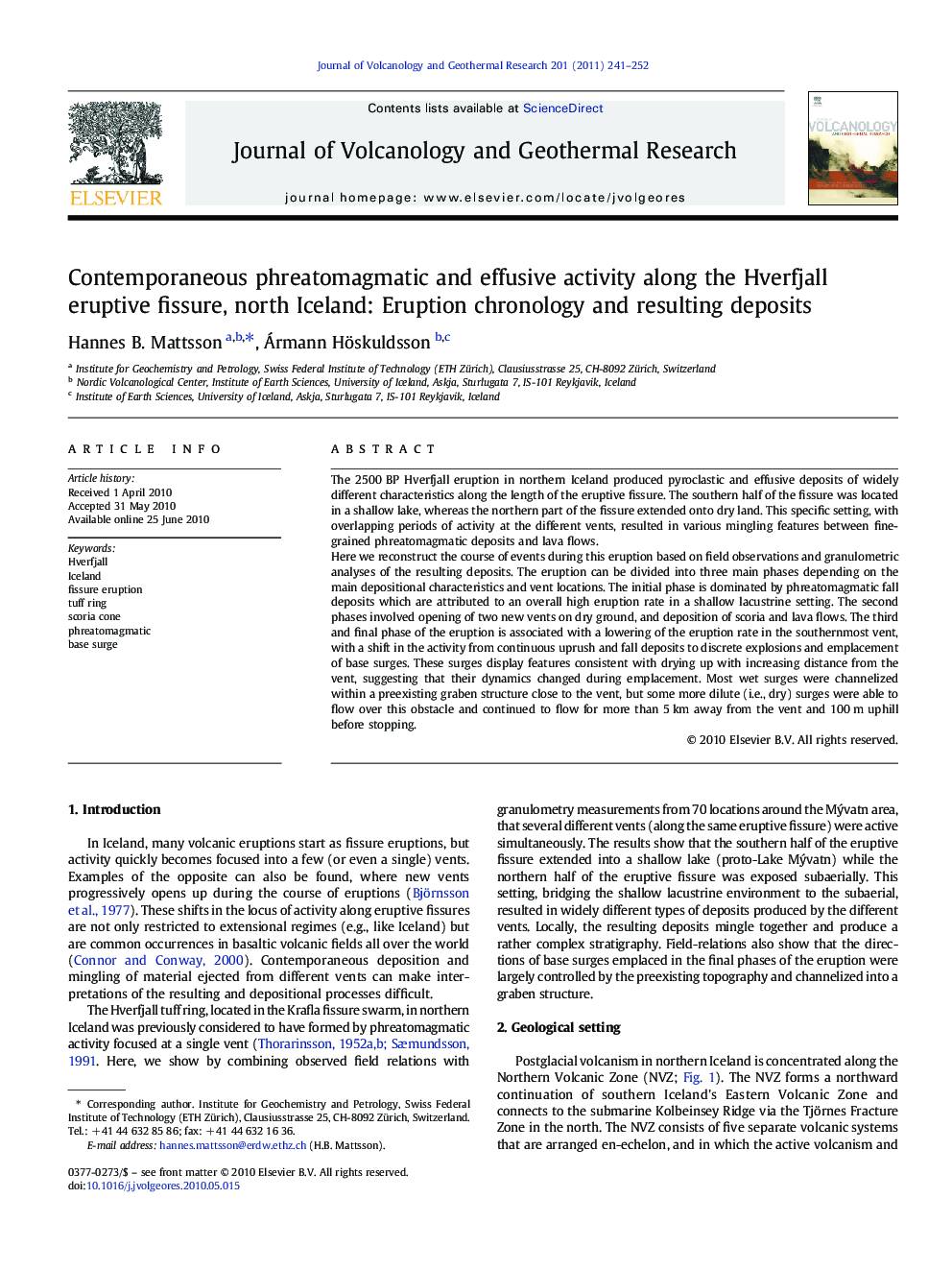| کد مقاله | کد نشریه | سال انتشار | مقاله انگلیسی | نسخه تمام متن |
|---|---|---|---|---|
| 4714053 | 1638406 | 2011 | 12 صفحه PDF | دانلود رایگان |

The 2500 BP Hverfjall eruption in northern Iceland produced pyroclastic and effusive deposits of widely different characteristics along the length of the eruptive fissure. The southern half of the fissure was located in a shallow lake, whereas the northern part of the fissure extended onto dry land. This specific setting, with overlapping periods of activity at the different vents, resulted in various mingling features between fine-grained phreatomagmatic deposits and lava flows.Here we reconstruct the course of events during this eruption based on field observations and granulometric analyses of the resulting deposits. The eruption can be divided into three main phases depending on the main depositional characteristics and vent locations. The initial phase is dominated by phreatomagmatic fall deposits which are attributed to an overall high eruption rate in a shallow lacustrine setting. The second phases involved opening of two new vents on dry ground, and deposition of scoria and lava flows. The third and final phase of the eruption is associated with a lowering of the eruption rate in the southernmost vent, with a shift in the activity from continuous uprush and fall deposits to discrete explosions and emplacement of base surges. These surges display features consistent with drying up with increasing distance from the vent, suggesting that their dynamics changed during emplacement. Most wet surges were channelized within a preexisting graben structure close to the vent, but some more dilute (i.e., dry) surges were able to flow over this obstacle and continued to flow for more than 5 km away from the vent and 100 m uphill before stopping.
Research Highlights
► Wet base surges are predominantly controlled by existing topography.
► Surge deposits mingle with the upper crust of lava flows during emplacement.
► Availability of water controls the fragmentation mode along the eruptive fissure.
Journal: Journal of Volcanology and Geothermal Research - Volume 201, Issues 1–4, 15 April 2011, Pages 241–252